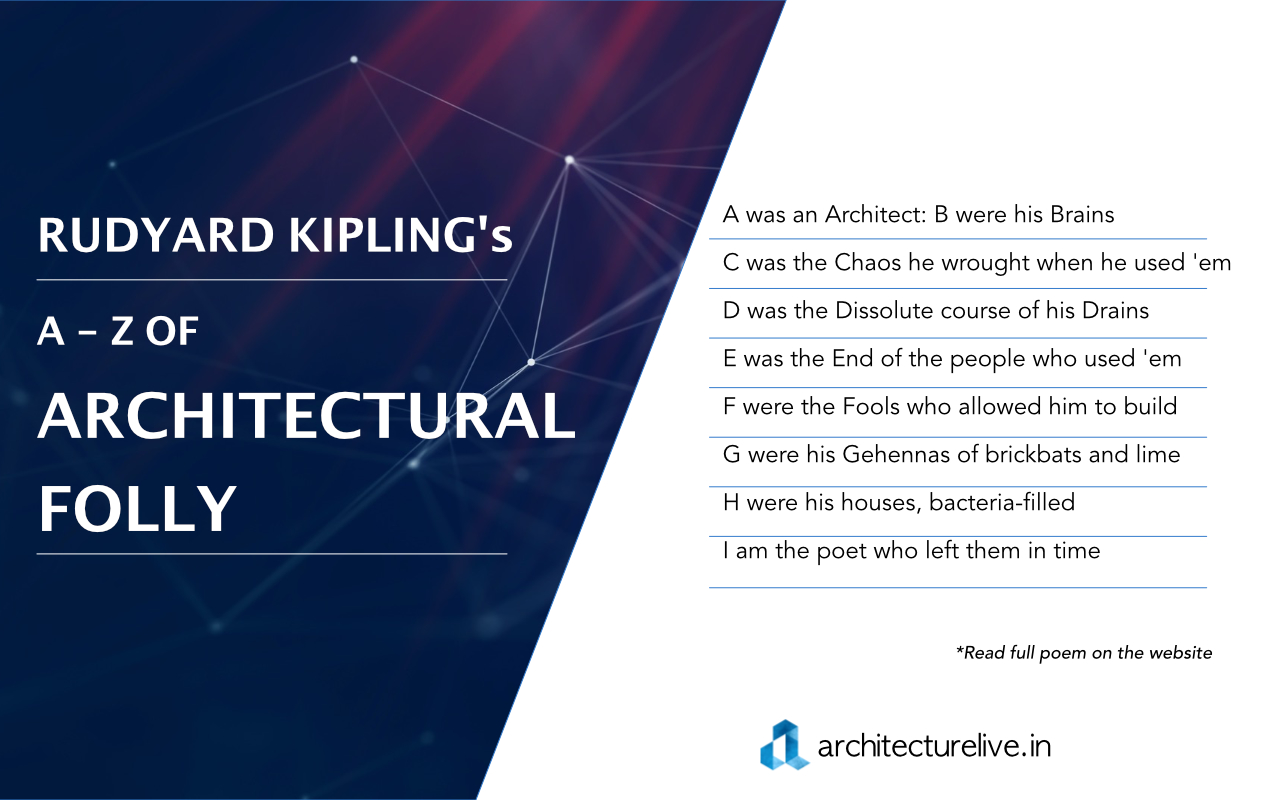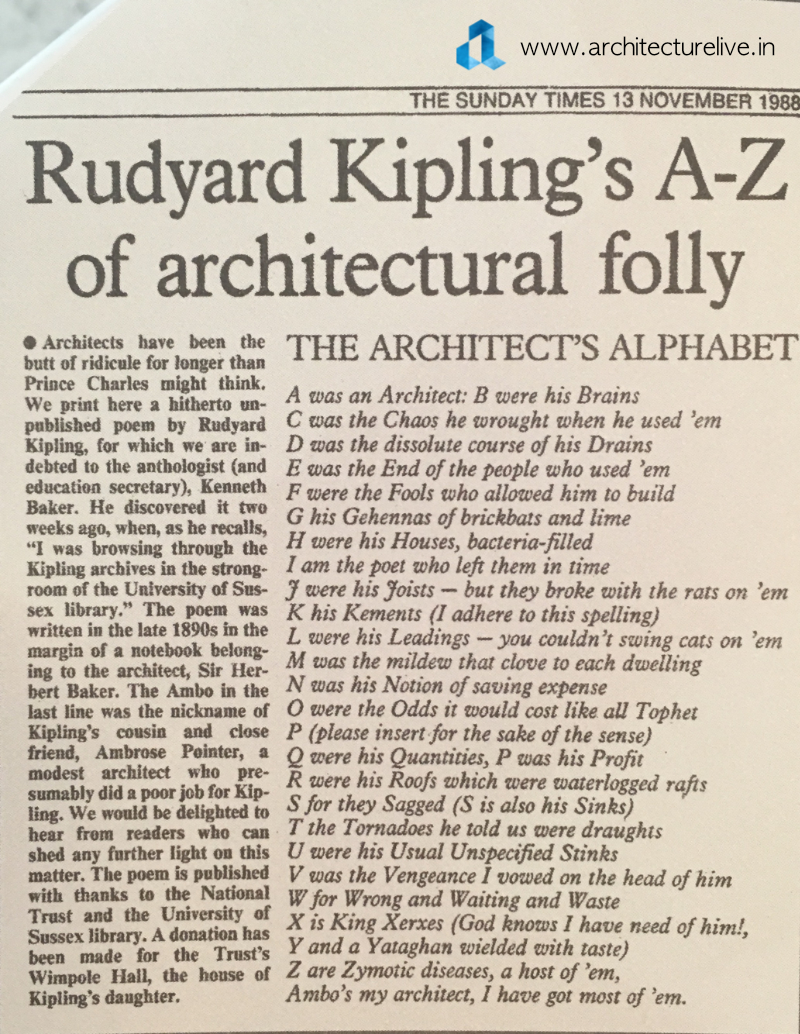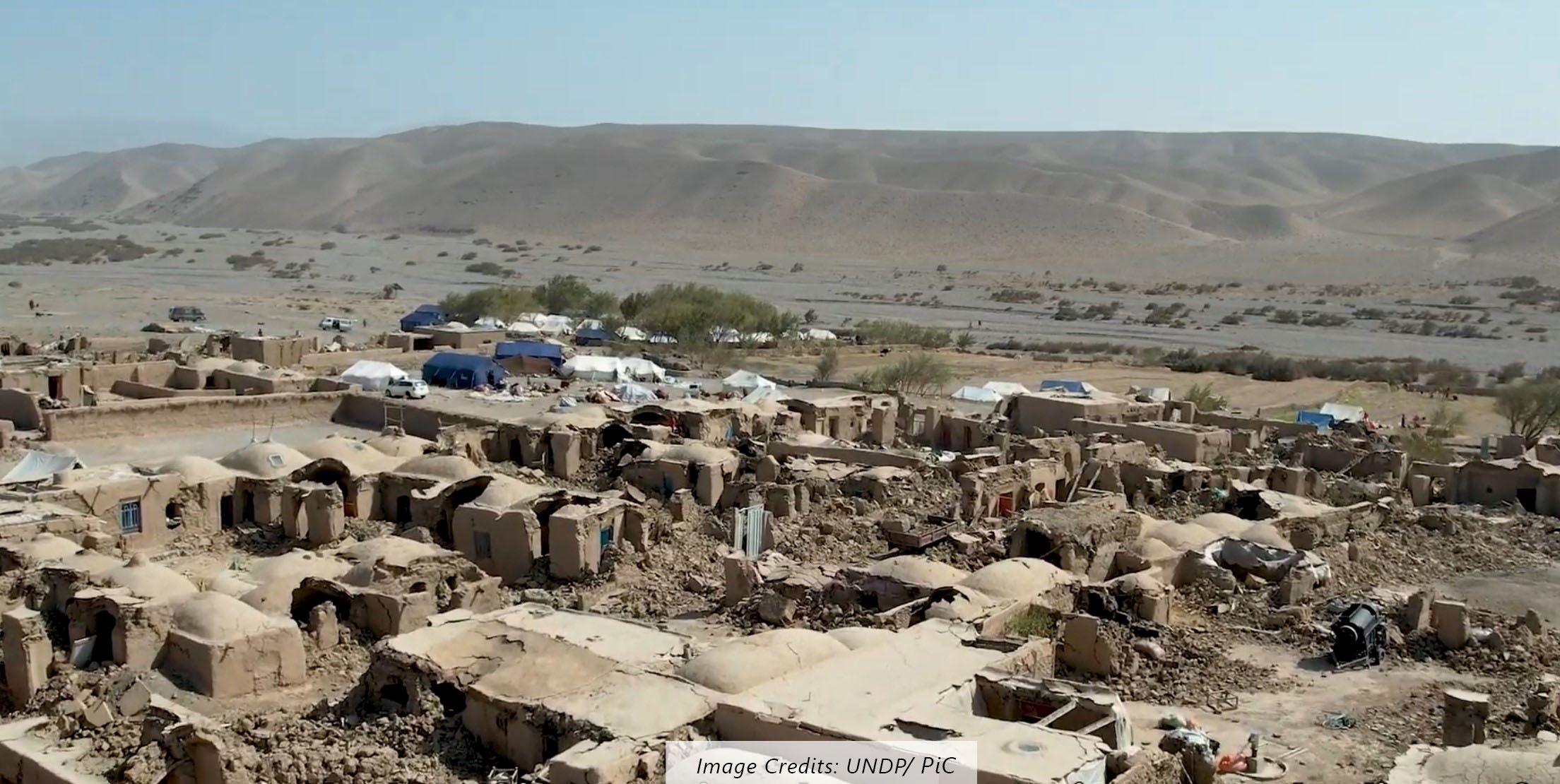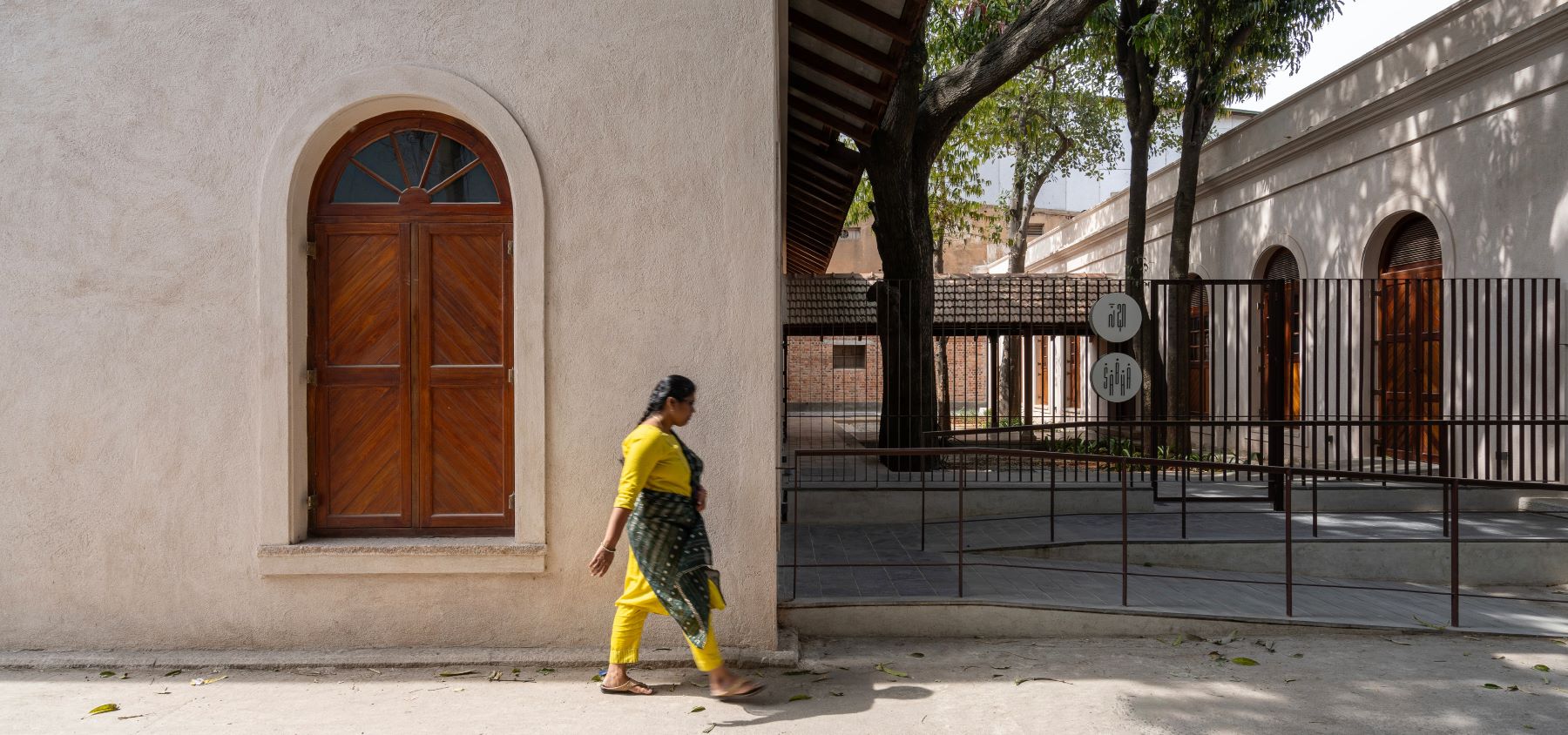Kenneth Baker, an anthologist discovered Rudyard Kipling’s unpublished poem, while browsing through the Kipling archives in the strong room of the University of Sussex Library. The poem was written in 1890s in the margin of a notebook, belonging to the architect – Sir Herbert Baker.
Ambo in the last line of the poem was the nickname of Kipling’s cousin, Ambrose Pointer, a modest architect who presumably did a poor job for Kipling.
Poem in the text below:
A was an Architect: B were his Brains
C was the Chaos he wrought when he used ’em
D was the Dissolute course of his Drains
E was the End of the people who used ’em
F were the Fools who allowed him to build
G were his Gehennas of brickbats and lime
H were his houses, bacteria filled
I am the poet who left them in time
J were his Joists- but they broke with the rats on ’em
K were his Kements (I adhere to this spelling)
L were his Leadings- you couldn’t swing cats on ’em
M was the Mildew that clove to each dwelling
N was his Notion of saving expense
O were the Odds it would cost like all Tophet
P (please insert for the sake of the sense)
Q were his Quantities, P was his Profit
R were his Roofs which were waterlogged rafts
S for they Sagged (S is also his Sinks)
T the Tornadoes he told us were draughts
U were his Usual Unspecified Stinks
V was the Vengeance I vowed on the head of him
W was Wrong and Waiting and Waste
X is King Xerexes (God knows I have need of him!,
Y and a Yataghan wielded with taste)
Z are Zymotic diseases, a host of ’em
Ambo’s my architect, I have got most of ’em.








